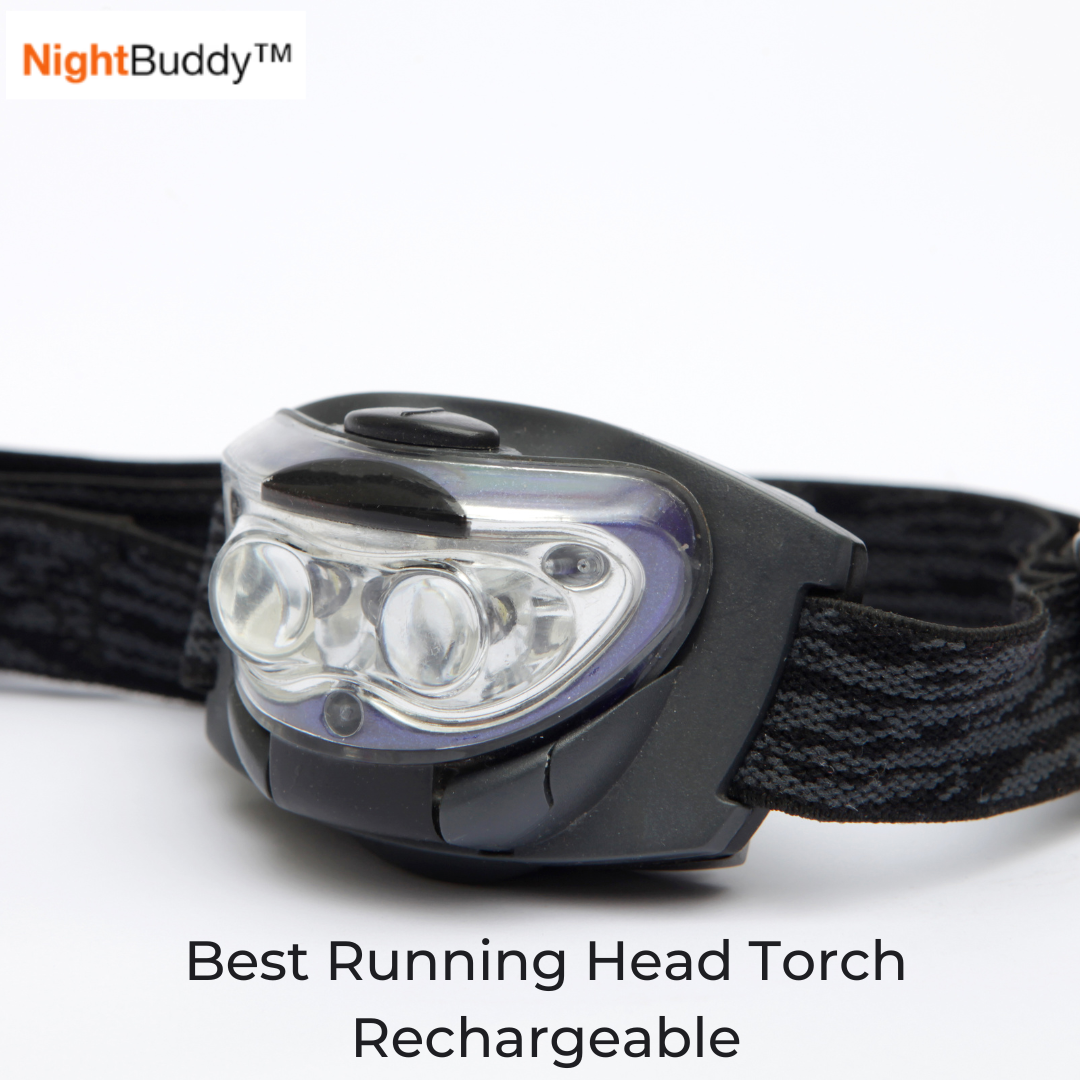Research has shown that exercising at night can offer numerous positive benefits to your body. For example, it can boost mental alertness and improve sleep quality. Running, in particular, is a great way to stay fit and healthy. However, when done at night, it can pose several challenges you should be prepared for.
Learning some tips and tricks is a crucial step toward making sure you stay out of danger's way and have an enjoyable experience.
As such, our guide covers 13 crucial tips for night runs, suitable for beginner and seasoned runners. So before you lace up your running shoes and head out, make sure to take note of them.
1. Plan Your Route Ahead

For your safety, it's critical to plan your route in advance. We recommend opting for a populated and well-lit route that you're familiar with, ideally in your city block or immediate vicinity, to minimize the risk of getting lost or spending too much time outside.
We strictly recommend against exercising in an isolated area at night due to the increased risk of danger from wildlife or crime, decreased visibility, and lack of help in case of an emergency. Additionally, it'd help if you relied on your GPS less, as checking your phone often could be distracting and potentially hazardous.
If you're tired of following the same route, try planning several ahead of time. For example, you can jot down interesting locations in your city, notably parks, and alternate between them for a change of scenery.
2. Wear Reflective Gear

Visibility is crucial while running at night. So wearing dark clothing can be potentially dangerous, as it'll make it difficult for drivers to see you. As such, wearing reflective gear is a smart option for ensuring safety.
Also, investing in accessories that incorporate fluorescence is a good idea, as they're excellent at making you visible to oncoming traffic. These include reflective strips, patches, gloves, armbands, and headbands.
Note that you don't have to wear bright, fluorescent clothing if you don't want to. Lighter-colored clothes like whites and pastels are also effective.
3. Invest in a High-Quality Headlamp

Running in the dark without proper lighting is dangerous, especially if you live in a dimly lit area. We recommend investing in a good-quality headlamp to light your way and avoid potential hazards, such as rocks, bumps, and potholes.
Opt for headlamps that offer long battery life and long-range visibility. For example, some advanced lamps have a 100-meter reach and can last from 3 to 8 hours on a single charge, depending on your settings.
If headlamps aren't your thing, consider investing in a beanie lamp. It provides both lighting and warmth during your run.
4. Run Facing Traffic

Running with traffic flow allows you to see oncoming cars and react promptly if necessary —it's key to staying safe while running. If you turn your back against the traffic, you'll be less visible to drivers, and they'll be harder for you to spot, which may put you at risk of an accident.
If possible, stick to the sidewalk while running and avoid the middle of the road.
5. Dress for Comfort

Make sure your workout outfit is ideal for the conditions. Temperatures often drop at night, so adding a layer of warmth is crucial — it'll help you feel comfortable.
Avoid workout clothes made of 100% cotton, such as sweatpants and sweatshirts. They don't dry quickly and can feel uncomfortable during cool evening runs. While they may provide initial warmth, they can't wick away sweat and may lead to discomfort and chilliness once they become drenched with sweat.
Also, make sure your running shoes are ideal for your route's conditions. They should be lightweight, comfortable, and fit snugly. You can invest in shoes that incorporate reflective or LED safety lights for added visibility.
6. Bring Your Phone

Your cell phone is an essential element of your overall safety while running. In addition to tracking your progress and allowing you to listen to music, it serves as a critical link for seeking help in case of an emergency.
Most modern smartphones include an option for sending an SOS message to your trusted contacts with the click of a button. It reveals your current location and notifies them, which is life-saving during an emergency. Check your safety settings and ensure it's already set.
We also recommend leaving your phone in your pockets or investing in an armband to hold it for added convenience. As always, keep your eyes on the route and try to use your phone scarcely, as distractions could be potentially risky.
Of course, before you leave, make sure your phone is fully charged and isn't in silent mode.
7. Carry your ID

Bring your driver's license or any valid ID for your safety. This will help first responders identify and contact the right people in case of an emergency.
If you don't want to bring your ID, you can wear a band or a road ID bracelet with your name and your in-case-of-emergency (ICE) contact details printed on it. The bottom line is we want first responders to reach your ICE contacts immediately.
8. Inform Your Family

We also recommend notifying your friends and family of your exercise plan beforehand, as it can help ensure your safety. Letting them know your running route, how far you'll go, and when you'll be back will allow them to intervene in case something goes wrong.
9. Bring a Running Buddy

Bringing a friend along can enhance your motivation and exercise routine's enjoyability. Moreover, another benefit it provides is added security. As such, try to connect with your friends or join a running club.
If that's not an option, some runners find bringing a furry friend along equally great.
10. Remain Aware

It's necessary to stay focused while running. Being aware of oncoming cars, your surroundings, and the route in front of you will go a long way toward keeping you out of harm's way.
Avoid running with loud music on, as it can be potentially risky. To enhance your focus, consider reducing the volume of your music or not wearing headphones. If you prefer exercising with earbuds, we recommend wearing only one to hear your surroundings.
If you feel like you're zoning out, bring your focus to your breathing or physical sensations to stay present.
11. Stay Hydrated

Staying hydrated is key in every exercise. So, make sure you drink enough water before you start exercising. Also, don't forget to carry a bottle of water with you. Depending on your local area, you may not be able to find water readily available for sale when you need to replenish.
12. Stretch and Warm Up

For improved performance, ensure you stretch and warm up before your exercise. It'll also help prevent injuries and cramps.
Simple, dynamic stretching exercises are all you need to prevent injuries. Try leg swings, jumping jacks, hamstrings sweep, and ankling and calf mobilizations — they're what other runners swear by.
Make sure you start slow, too, especially if you have respiratory issues.
13. Carry a Defensive Device

If you have concerns about your safety while exercising, especially in areas with high crime rates, carrying a personal safety device may bring peace of mind.
Pepper spray is one option, but it's important to familiarize yourself with your city or state's laws regarding self-defense before carrying a defensive device.
What Are Some Benefits of Running at Night?
Running at night isn't just fun; it's also incredibly good for you! Let's delve into the key benefits of running at night.
Better Sleep Quality
Studies have indicated that exercising at night can enhance your sleep quality as long as it isn't intense.
So if you have trouble sleeping, running in the evening may help. It regulates the circadian rhythm and increases the release of sleep-promoting hormones, such as melatonin. Moreover, it elevates your body temperature, and once that drops, it signals your body to prepare for sleep. Finally, physical exertion will lead to fatigue, which will help you fall asleep faster.
Stress Relief
Running in the evening can also help you destress. It releases endorphins, which are the body's natural mood boosters. Furthermore, the mental and physical exertion that comes with running can distract you from daily stressors and improve your overall mental health.
Better Air Quality
Contrary to running in the morning, night-time runs can provide better air quality. Air pollution is often higher during the day due to increased traffic and industrial activity. If you have respiratory issues, switching your routine is an option.
More Free Time
Night runs will help you make the most out of your day. By taking care of your exercise routine in the evening, you free up time during the day for other activities, such as work, spending time with family and friends, or pursuing your hobbies. This will help you maintain a better work-life balance and make you feel less stressed and overwhelmed overall.
Consistent Running Routine
Early morning runs can be difficult for runners who have busy schedules, so they're unable to consistently follow through. Unfortunately, if you keep missing your workouts, you may feel unmotivated to go back. Skipping workouts may also hinder your progress, further demotivating you in the process.
So, if you have trouble with limited daylight hours, running at night is all you need.
Better Overall Experience
Night runs are better in several ways. Most importantly, the decrease in traffic makes for quieter and safer runs, which is ideal if you prefer exercising in peaceful environments.
The temperature also decreases to a point where it's comfortable for individuals who dislike running under the sweltering heat of the sun or those who live in hotter regions.
Finally, whether it's due to the combination of quietness and peace or being alone with one's thoughts, runners generally find evening runs to be more memorable.
Final Thoughts
To wrap up, our safety tips are geared toward ensuring that you prioritize your safety while enjoying the experience and benefits of running at night.
Although night runs may be uncomfortable or seem potentially risky for many, it takes minimal preparation and discipline to make the most out of them.
The key point is to make sure that you prepare your night running plan in detail. Plan ahead to run alone or in a group, determine the route and the timing of the training, and inform your family or friends in case the situation takes a wrong turn. And remember that there are items that help ensure your comfort and safety, such as headlamps.
If you're looking for a reliable headlamp for your night runs, you should check out NightBuddy 230º LED Headlamp. This lightweight, rechargeable headlamp has an amazing battery life — it can light your path for up to 8 hours.
Runners prefer this specific brand because it gives them peripheral vision without the discomfort of most headlamps. It also has a unique zero-bounce design for your comfort and a wave sensor, so you won't have to fumble for the switch.
See research
Read:
- The Ultimate Guide on How to Choose a Headlamp
- Best Red Light Headlamps Ultimate Guide to: Benefits and Uses
- The Ultimate Guide to Choosing the Best Headlamps for Adventure
- How Bright Should a Headlamp Be for Running?





Leave a comment
This site is protected by hCaptcha and the hCaptcha Privacy Policy and Terms of Service apply.